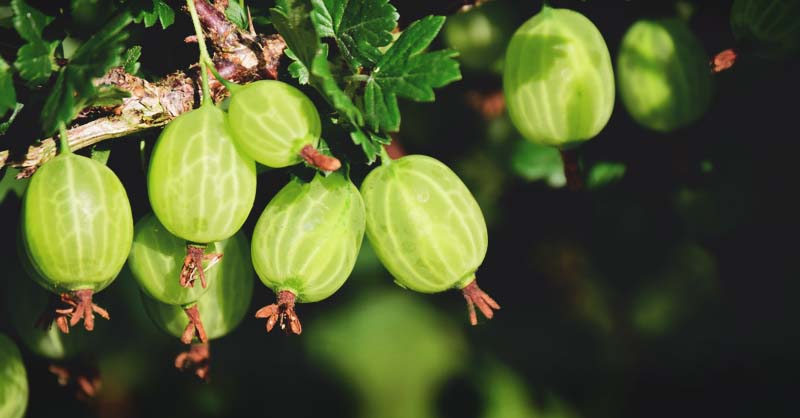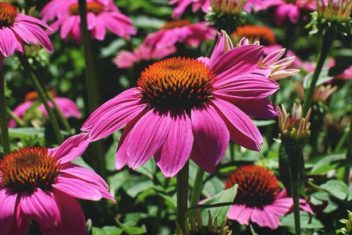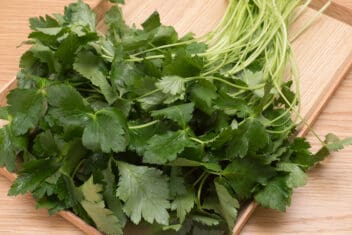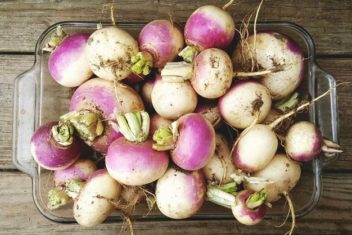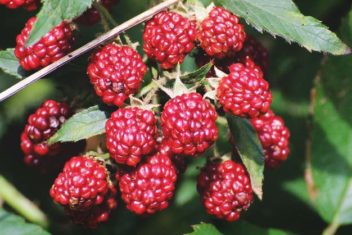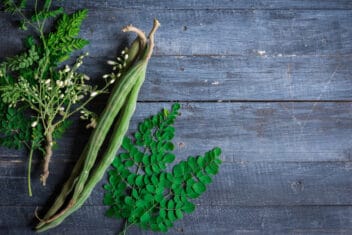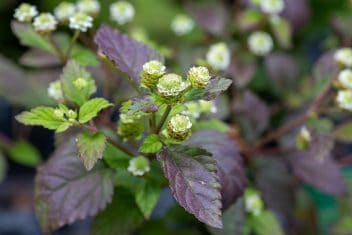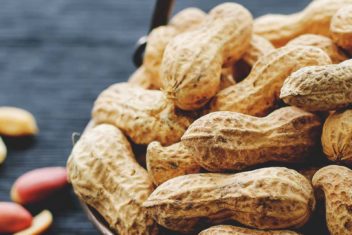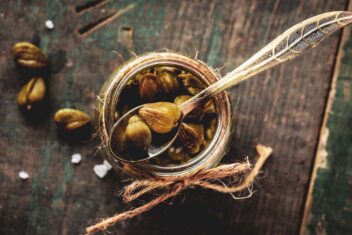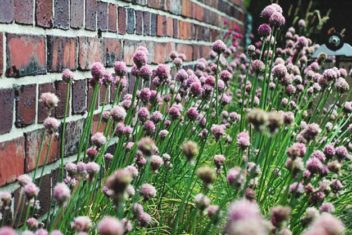Gooseberries aren’t a well-known American plant. They’re more famous in Britain where gooseberry plants are everywhere, and there are even competitions to see who can grow the largest and sweetest fruit! Sadly, America doesn’t share the fascination for growing these delectable berries, but they’re becoming more popular – and for good reasons.
Gooseberries are rich, sweet, and easy to care for. For the most part, you can leave them to their own devices and end up with a bountiful harvest waiting to be made into jams and desserts. If you do give the plants care and attention, you’ll find that they produce bumper crops of these delicious gems.
If you’ve never tried growing gooseberries before, or if you want to make your existing plants thrive, we’ll show you how.
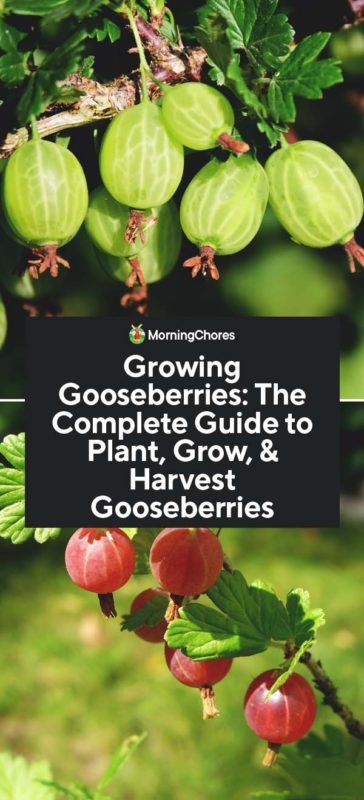
The Best Gooseberry Varieties
Gooseberries come in two varieties: cooking (culinary) and dessert. Some are dual purpose, and all are sweet if you leave them to ripen on the bush. Gooseberries come in four different colors – green, red, white, and yellow. They also come in European and U.S. varieties.
Here are a few kinds to consider:
White
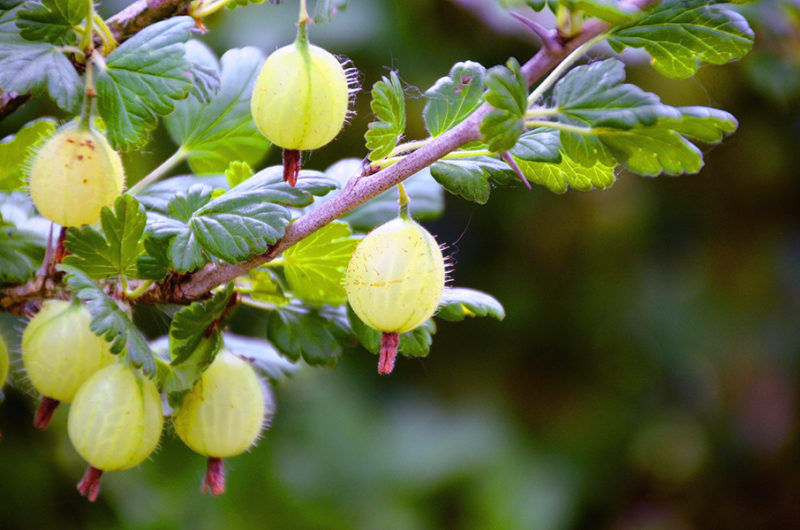
- Langley Gage – this variety has large, thin-skinned white berries on a medium-sized bush. It’s one of the most famous English types, and many growers say it has the most delicious dessert berries.
Green
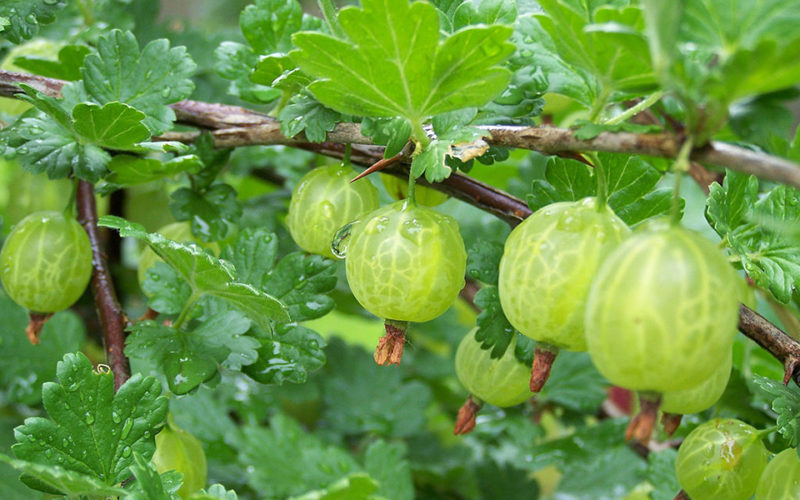
- Careless – Careless is an early bloomer with good all-around berries. It can handle a variety of soils.
- Invicta – Invicta is a U.K variety and is one of the most common gooseberries out there. It has pale green berries and ripens in July.
Yellow
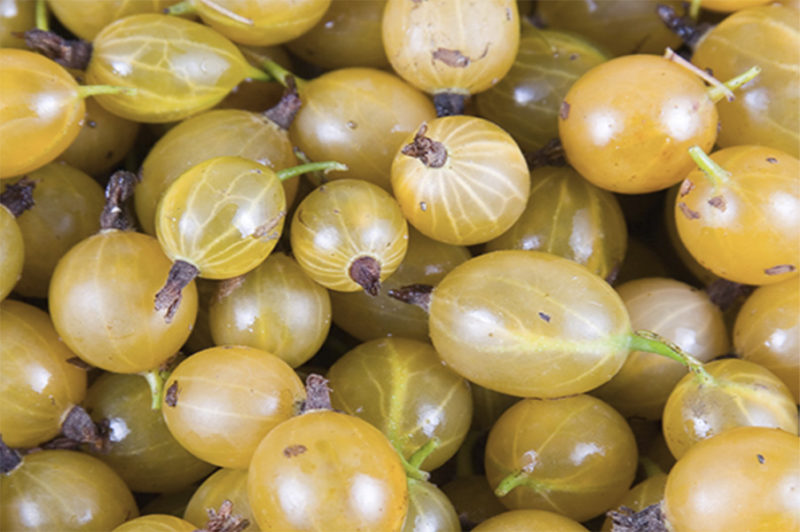
- Golden Drop – This plant ripens mid-season with lots of medium-sized fruits. The bush has an upright, compact growth habit.
- Leveller – This mid-season bloomer has oversized yellow berries and a heavy yield. It needs rich soil to produce well, but if you can provide that, you’ll get excellent dessert fruits.
- Hinnomaki Yellow – This plant has lots of spines, but it’s a prolific, all-around producer. It lends nicely to container growing.
Red
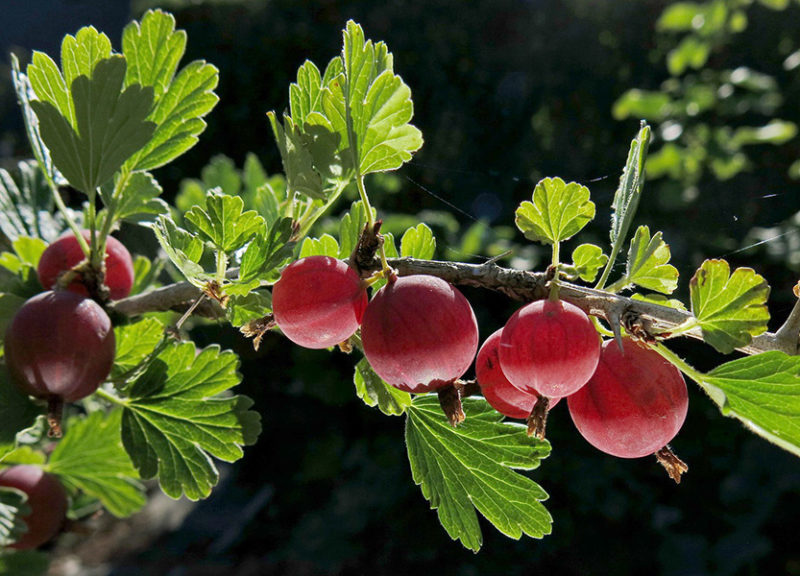
- Pax – Pax lacks the spines that some other gooseberries have. It’s mildew resistant and perfect for desserts. It can’t handle heavy winters, however.
- Rokula – This German variety resists mildew, and it fruits a good week earlier than other berries. It has a compact growth habit and the dark red berries are incredibly sweet.
- Winham’s Industry – This U.K. variety is considered the gold standard of dessert gooseberries. It’s a vigorous grower that can handle most soils. It ripens in late July.
- Lord Derby – This plant grows large dark red fruits with a fine skin. It ripens later in the season.
- Poorman – This American variety is vigorous and has small thorns. It’s mildew resistant and produces large, flavorful berries.
- Captivator – This thornless variety has marvelous pink berries that grow on an upright bush. It’s mildew resistant.
How to Plant Gooseberries

Sun and Temperature Requirements
Gooseberries aren’t picky about their location. They prefer a sunny area, as do most berries, but they will grow and fruit in areas with some shade.
Gooseberries are a hardy plant, and they can survive plenty of frost. Some varieties are hardy up to -40℉. They won’t produce well in warmer climates that have temperatures reaching over 90℉. They grow in zones 3-8.
The Right Placement
Unlike other soft fruits, gooseberries tolerate an exposed position. If you can, protect them from strong winds.
Place the bushes 5 feet apart each for proper air circulation, with 8 feet between rows. Gooseberry bushes are self-fertile, so you don’t have to plant two or more plants together for a good crop as you do other berries. One plant will do.
Soil Requirements
Gooseberries need moist, well-draining soil. Waterlogging isn’t this bush’s friend, so it’s in your best interest to spend time improving the structure of the earth. Add compost, peat, sand or a soil conditioner to make sure the soil is loose, and water can drain. The ideal pH for gooseberries is 5.5-6.5.
Buying Your Gooseberry Plants
You can buy bare-root bushes or potted plants, often called open-center goblets. They have a short trunk and four or five permanent branches that carry the fruits.
You can purchase potted plants, but they’re more expensive. Bare-roots are economical and are available in nurseries in early or late fall. There is no right or wrong choice; both types will produce a prolific gooseberry plant if you give it the proper area to grow.
Planting Gooseberries
The best time to plant bare-root gooseberries is between late autumn and early spring, ideally in November or December, but it can be done up until the end of February or the beginning of March. That can be tricky if your soil is frozen or waterlogged that time of year, so plan ahead.
Potted gooseberries can be planted between autumn and spring. They’re a bit easier to plant because they already have a small root system established.
Bushes should be placed 4-5 feet apart. They can be trained into cordons or fanned against walls or fences if you want to save space.
When you plant the bush, dig a 2×2-foot hole that is at least 1 foot deep. Put a layer of compost or other organic matter at the bottom of the hole. Spread the roots of the gooseberry bush into the hole, and plant to the same depth as it was previously. Make sure the new soil is at the old soil mark on the stem, then water deeply.
Growing Gooseberries in Containers
You can plant gooseberries in containers, but it can be a bit of a challenge to make sure they aren’t waterlogged or faced with dry soil. Keep a close eye on the soil moisture content.
When growing gooseberries in pots, make sure they’re watered frequently, especially when the fruits are forming, and use an organic feed such as bone meal or blood fish. You will want to use an occasional feed that’s higher in potash; liquid tomato feeds are ideal.
Make sure you pick a container that’s at least 18-inches deep. Fill the pot with a mixture that consists of half potting compost and potting soil.
How to Care for Gooseberries
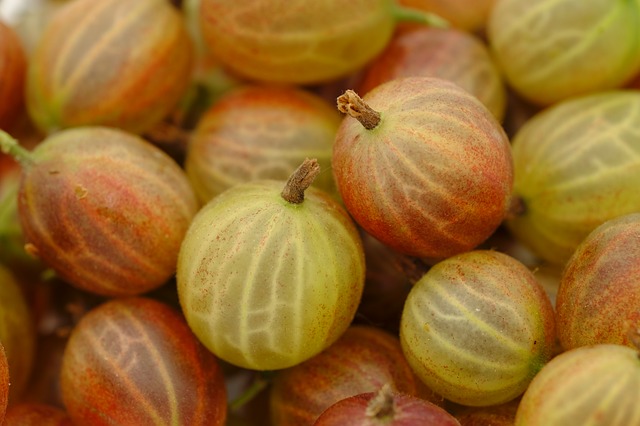
Watering
Once the plant is fully developed, you don’t have to worry about watering it too often. You should plant to water an inch every week or two, and more frequently during hot spells.
Fertilizing
Gooseberries need to be fertilized in early spring, and a balanced granular fertilizer is the best choice. You don’t want to overload the plant with nitrogen because it will put the plant at risk for mildew.
Gooseberries benefit from a regular source of potassium. The ideal plan is to feed the plants monthly from early spring until around harvest time. You can use a tomato-feed fertilizer or a 5-10-10 liquid fertilizer. Liquid tomato feed is a great source of potash. Another choice is to sprinkle wood ash around the bushes to make sure the bush has enough useful potassium
Mulching
Gooseberries do best when you spread some organic mulch around the root area of the plant. Compost or bark chips are two good choices. Mulch is important for gooseberries because it helps to conserve soil moisture.
Each year in the early spring, apply a 2-inch layer of organic matter around the plant, but make sure it’s not touching the main stem of the bush. Doing so helps to reduce the growth of weeds, retain water, and add nutrients back into the soil.
Pruning
Gooseberry bushes need to be pruned annually between late autumn and late winter when gooseberries are dormant. Pick a day when the weather’s going to be dry to reduce the risk of fungal infections. Your goal is to cut back new growth to two buds and the main shoots, known as leaders, by one-third.
In the summer, prune new growth to five leaves to help encourage a better harvest in the following year. The berries grow on branches that sprouted in the previous years, but branches that are older than three or four years old will become unproductive. Those branches need to go.
Propagating Gooseberry Plants
Like any other bush, you can propagate gooseberry plants if you decide you want to grow a few more. Doing so creates a basic clone of the plant.
Take cuttings from the hardwood to provide a reliable stem for growing the bush. Take cuttings during the plants’ dormant season – any time from mid-autumn to late winter, ideally after they drop their leaves.
When you propagate, take a strong branch that is one year old. Cut off the soft growth at the tip, and cut the branch into sections that are at least six inches long. Make a top cut just above the bud at a slant. Dip the cutting into a hormone rooting powder and put the stem into a pot with soil mixture. Water to keep moist and keep in place for a year to allow it to grow roots.
Common Diseases and Pests
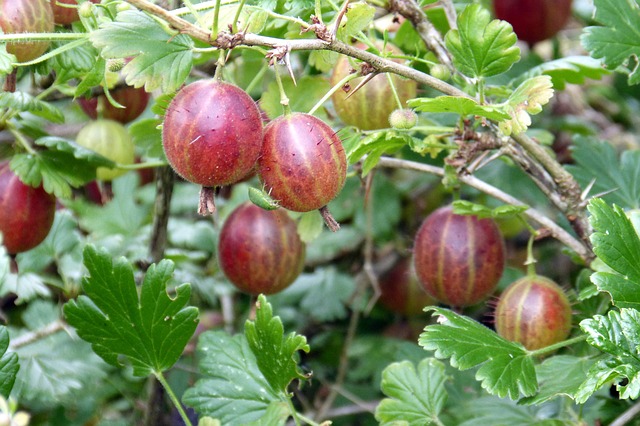
Gooseberry Mildew
Similar to powdery mildew, gooseberry mildew causes a powdery grey and white fungus to cover the leaves and stems. It might also spread over the fruit, which can cause problems with ripening.
To get rid of the gooseberry mildew, remove any part of the infected stem and leaves, and destroy them. Mildew is most likely to bother plants that are spaced close together, so be sure to allow for adequate air circulation.
Gooseberry Sawfly
Gooseberry sawflies are pale green larvae that look similar to caterpillars. They cause rapid and destructive defoliation of plants. It can reduce your bushes down to just stems in no time. You’ll notice the destruction starting in the middle to late spring, but the problems can start well into summer.
Be sure to watch your plant carefully, checking the underside of leaves. Remove the larvae by hand.
Anthracnose
This fungus can cause masses of spores on plants that can destroy your harvest. Buy resistant varieties if you struggle with this fungus, and disinfect your tools between use.
Destroy any pruned branches that are infected, and use a liquid copper spray or sulfur powder starting in the early spring to prevent it. You can also use neem oil in the spring to destroy the bugs that spread the disease.
Currant Cane Blight
Currant cane blight impacts plants in New England. It can kill a bush in as little as two years. You’ll see shriveled fruits, and new growth will turn pale brown and decay.
Remove and destroy infected canes in the spring and fall and spray plants with an anti-fungal treatment.
White Pine Blister Rust
Gooseberries are a host for white pine blister rust, which is a serious threat to high elevation pine trees. Don’t plant your gooseberries near white pine trees and destroy any plants that are infected. Watch for cankers on your plants to know if you have it.
Currant Borer
This blue-black moth with clear wings lays eggs at the base of plants. Remove infested canes and destroy them. You can also encourage garden predators like parasitic wasps.
Aphids
At some point, pretty much every garden will suffer from aphids. They suck the sap out of plants and can spread disease. Look for clusters of brown, green or white bugs. Spray plants with a blast of strong water and then treat with neem oil to keep them away.
Birds
Birds are a natural pest that can destroy your gooseberry plants. Pigeons love gooseberries, but any bird will make the bush a yummy snack. Birds can cause a variety of problems by eating the seedlings, buds, leaves, and fruits.
To protect your plants, consider putting a net or fleece over top. Scarecrows and bird-scaring devices can work, but covering the plants is the best choice for long-term.
Companion Planting for Gooseberries
Ideal companions for growing gooseberries are:
- Tomatoes
- Beans
- Peas
- Marigold
- Tansy
- Fuchsias
- Chives
- Beans & Legumes
Don’t plant gooseberries near white pine.
How to Harvest and Store Gooseberries
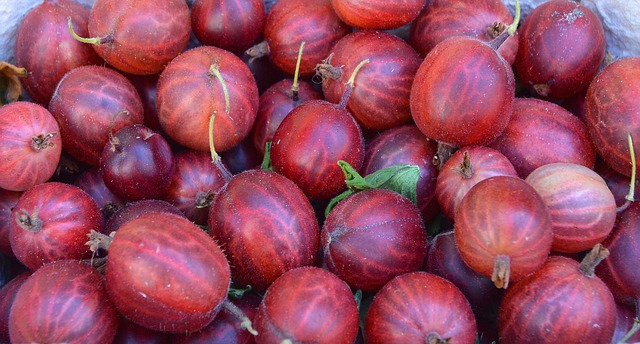
Harvest gooseberries starting in early July. The average gooseberry bush produces an impressive 11 pounds! This time is when you’ll really need netting because birds love ripe berries, and who can blame them?
Gooseberries can be eaten ripe right off the bush. They’re a delicious snack, but make sure you don’t leave them on the bush too long when they’re soft. You can freeze gooseberries as well, which is handy, because you can only make so many pies or jams with berries at one time.
The berries that are ripe in the early summer are perfect for jams, pies, and crumbles when sweetened with sugar. You can remove around half the crop at this time, leaving all the under-ripe berries to be finished.
Growing Gooseberries
Gooseberries are a unique fruit that you can grow in your garden for a bit of sweetness throughout the year. They don’t require too much care as long as you prepare the right soil and location ahead of time. With proper watering and fertilizing throughout the year, you can expect a bountiful harvest to help stock up your pantry for the year.

